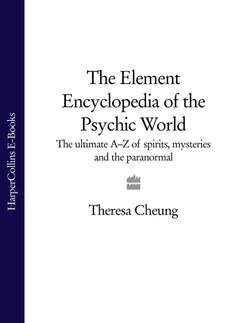Читать книгу The Element Encyclopedia of the Psychic World: The Ultimate A–Z of Spirits, Mysteries and the Paranormal - Theresa Cheung, Theresa Cheung - Страница 111
BLACK ELK, NICHOLAS [1863—195-0]
ОглавлениеBlack Elk was an Oglala Sioux mystic born in December 1863 on the Little Powder River, South Dakota. He was the son of the elder Black Elk and White Cow Sees Woman, and he devoted his life to helping his people find unity and strength.
From an early age Black Elk knew he was destined for great things. Around the age of four he began to hear voices, and a year later he had his first psychic vision. Aged nine he had his great vision, in which he was empowered by the Grandfathers, who represented the powers of the world. For two days he fell ill, and during this time he went in an out-of-body experience to the clouds, where he was greeted by the Grandfathers. They took him to the centre of the universe and gave him supernatural power to heal. The Grandfathers showed him the sacred hoop of his people, which represented their soul, and in the centre was a crossroads: one path, the red one, was sacred, while the other, black path was the path of materialism. A voice told Black Elk that he had been given his nation’s hoop and it was up to him to set them on the right path.
From the day of his vision Black Elk changed. He found he had prophetic visions and he could understand the songs of birds and animals. He used his great powers of healing and wisdom to help his people rediscover their traditions.
During Black Elk’s young adulthood, missionaries tried to convert the Oglala Sioux to Christianity, often by force. Black Elk himself was baptized Nicholas Black Elk on 6 December 1904, near present-day Pine Ridge, South Dakota, but his Lakota spirituality remained strong throughout his life. He took part in the underground movement supporting traditional religion, which became necessary after the US government outlawed native rituals. Throughout his life, he took part in both secret traditional practices and public Catholic rites.
Black Elk feared that US policies would destroy the Lakota Nation’s identity, so during the summer of 1930 he dictated his life story to John Neihardt. The resulting book, Black Elk Speaks, was published in 1932 and has been reprinted many times. In it Black Elk described the history of the Lakota Nation and provided a sense of hope for the future. His vision eventually became a message to the Lakota people - a warning not to assimilate completely and thereby lose their unique heritage.
Although Black Elk died in 1950, long before the passage of the Indian Religious Freedom Act in 1978, his teachings, combined with this legislation, created a new respect for and interest in Lakota spirituality.
